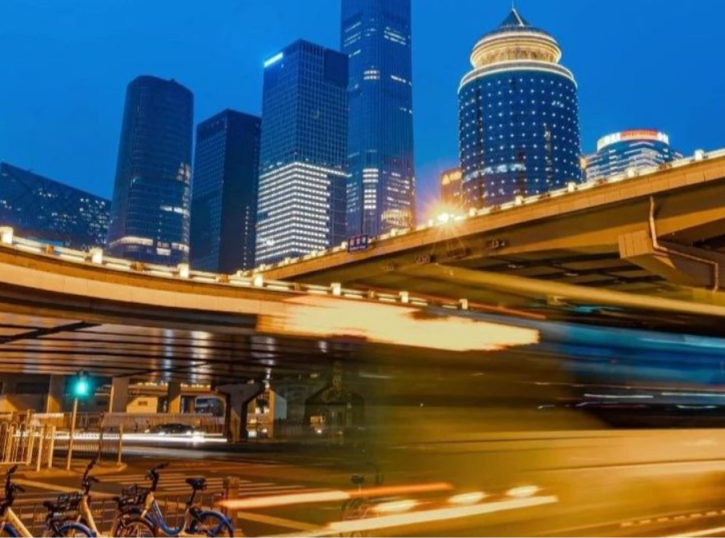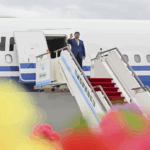Traffic flow improvement projects, known for their short implementation cycles and quick results, are often called “minor surgical procedures” in the transportation field. Thirty municipal-level traffic flow improvement projects are planned for completion in 2025, with 27 already finished to date. These include comprehensive congestion mitigation projects at the Dujiakan section of the Beijing-Hong Kong-Macao Expressway. Ongoing projects include the bottleneck section widening and renovation on Chongwenmen Inner Street (in front of Tongren Hospital) and traffic organization optimization on the south service road of Jianguo Road (from Guomao Bridge to Sihui Bridge), all scheduled for completion within the year.

Installing elevators at hospital-area pedestrian bridges in batches
As the year ends, 27 municipal-level traffic flow improvement projects have been completed, bringing gradual changes to renovated bridge areas, intersections, and pedestrian bridges.
On the north side of the west gate of the Cancer Hospital and the west side of the China-Japan Friendship Hospital, direct elevators have been added while preserving existing stairways, making street crossing easier for patients with mobility challenges and elderly individuals.
“After the elevators began operation, during morning medical peak hours, the Cancer Hospital bridge elevator serves 486 people per hour, while the China-Japan Friendship Hospital bridge elevator serves 407 people per hour, showing high utilization rates.” Future plans include gradually installing elevators at pedestrian bridges near hospitals in batches each year to continuously improve barrier-free travel environments.
Enhancement of space under bridges has also been an important focus of this year’s traffic improvement projects. This year, dynamic traffic organization optimization has been completed for the spaces under five bridge areas including Lianxiang Bridge, Xiyuan North Bridge, and Wanfeng Bridge. At Xiyuan North Bridge, the space beneath the bridge was used to widen bicycle lanes and move the south entrance stop line “backward” to prevent queuing vehicles from affecting left-turning buses. At Lianxiang Bridge, left-turn and straight-through lanes were added beneath the bridge, increasing the number of lanes from three to five, while also adding a dedicated west-to-west U-turn lane, significantly improving overall intersection efficiency.
Adding entrance acceleration lanes at Wanquanhe Bridge
This year, special focus was placed on road entrances and exits with prominent traffic supply-demand conflicts. Projects implemented include road renovations around Pingfang Bridge on the East Fifth Ring Road, entrance and exit improvements at Deshengmen Bridge on the North Second Ring Road (outer ring), adding a main road exit on Chongwenmen East Street, and renovating the north exit at Wanquanhe Bridge.
At the Pingfang Bridge area on the East Fifth Ring Road, heavy traffic merging from Yaojiayuan Road (Airport Second Expressway) onto the inner ring ramp of the East Fifth Ring Road caused traffic “backflow” onto the main Yaojiayuan Road during peak hours, leading to severe congestion. During renovations, a new main road exit was created east of Pingfang Bridge, allowing vehicles going straight on Yaojiayuan Road through the bridge area to use this exit to access the service road, alleviating congestion at the main road node.
The Wanquanhe Bridge renovation project, located at the main road entrance north of Wanquanhe Bridge on the inbound Wanquanhe Road, involved compressing one service road vehicle lane and rebuilding a approximately 4-meter-high retaining wall to add an acceleration lane between the main road entrance and the exit ramp to the Fourth Ring Road on Wanquanhe Road. After completion, traffic congestion improved on the inbound main road of Wanquanhe.
“Minor surgery” reduces congestion at Yuquanying Bridge area
This year’s traffic improvement projects specifically targeted sections and intersections prone to congestion with “minor surgical procedures,” using methods like road widening and intersection channelization to eliminate bottlenecks and small congestion points.
For example, the Yuquanying Bridge area intersection renovation project converted the north entrance U-turn lane into a combined straight-through and U-turn lane, improving upstream road utilization efficiency. Meanwhile, using the





